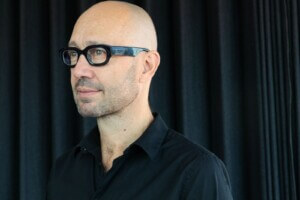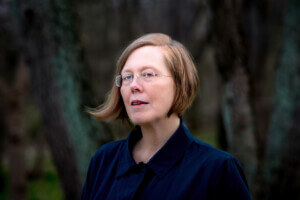Note: The Architect’s Newspaper received this obituary from John Shaw’s son, Lytle Shaw, who’s also the author. With his permission, we’ve posted the obituary below.
John Preston Shaw passed away on June 9, 2016 in Issaquah, Washington. Shaw had a long and prestigious career as an architectural educator and architect. He was born July 7, 1928 in Abilene, Texas, and graduated with a degree in architecture from the University of Texas in 1950. The next four years he spent in the Air Force, first in North Dakota and Nebraska, designing demountable housing for the Strategic Air Command directly under the famous Cold Warrior Curtis LeMay. In 1953-54 Shaw was sent to Europe: first, by accident, to Paris; later, once the Air Force learned of their mistake, to Wiesbaden, West Germany. In 1955 Shaw returned to Austin where he worked in the office of Fehr and Granger (1955-1956) and taught at the University of Texas in the architecture department (1955-1958). It was here Shaw met Bernhard Hoesli, Colin Rowe, Lee Hodgden, Werner Seligmann, and John Hejduk, and formed the group of educators known as the Texas Rangers, many of whom (Hodgden, Rowe, Seligman, and Shaw) later taught at Cornell. Shaw had the distinction of being the only Texas Ranger actually from Texas. This group’s contribution to architecture education in the United States is the topic of Alex Caragonne’s 1995 The Texas Rangers: Notes from an Architectural Underground.
John Shaw met Betsy Gidley in Austin, Texas in 1957 and the two were married in 1958. They shared, among other things, a strong interest in music, especially opera. The two moved to Cambridge, Massachusetts during the summer of 1958, where Shaw attended Massachusetts Institute of Technology (MA, 1960), studying with Eduardo Catalano, and taking classes with Lewis Mumford, and with Siegfried Giedion at Harvard. During the summer of 1959 Shaw won a Skidmore Owings and Merrill travelling fellowship that took him and Betsy to Europe. That fall he was offered an assistant professorship at North Carolina State University, where he taught until 1962, when he was offered a job at Cornell University, where he remained until his retirement in 1995.
At Cornell, the ideas explored initially at the University of Texas were developed into a more robust, expansive pedagogy. While Shaw’s examples still centered around modernist architects (including Le Corbusier, Wright, Mies, Aalto, and Kahn) he tended to understand them less as makers of iconic, self-enclosed buildings than as architects whose program and site-specific vocabularies had not been sufficiently acknowledged. His lectures and seminars often focused on the buried contextualism latent within high modernism, and to this end stressed on-site investigation. It was on such investigations that he generated a formidable slide archive. And yet the slides that remained at the center of his lectures were not only those of the high modernists. Shaw was equally interested in Swiss barns, Dutch polders, the mosque at Cordoba, medieval urbanism in Spain and France, small town Texas courthouses, Italian villas, palazzi and town planning, cubist and Renaissance painting, and Commedia dell’Arte (about which he published an article in the Cornell Journal of Architecture). He was also an enthusiastic watercolorist and collagist.
Among his many interlocutors at Cornell were not only the Texas Rangers, and many younger colleagues, but also European architects including Martin Dominguez and Oswald Mathias Ungers (who Shaw recruited to Cornell). Shaw was a strong advocate of his students, and a much-loved professor. He trained and mentored several generations of architects including Musfafa Abadan, Bruce Abbey, Ed Bakos, Larry Borins, Jason Chandler, Peter Choi, Steven Fong, Dan Kaplan, Blake Middleton, Burton Miller, Richard Olcott, Chad Oppenheim, Andrea Simitch, Todd Schliemann, Aaron Schwartz, and Val Warke, amongst many others.
In 1986, Shaw was the first professor to teach in Cornell’s new program in Rome, to which he returned several times. Other foreign teaching included summer schools in Switzerland, Mexico, Greece, the Aegean, and Germany. Shaw was also a visiting professor at University of California, Berkeley, Rice University, University of Texas, and University of Tennessee. Shaw retired from Cornell in 1995 to an earth-ship hacienda he designed and built in Taos, New Mexico. Among his other built works are the Tompkins Trust Company Bank in Ithaca, New York, the Divi Hotel in Aruba, and the Clark/Shaw house in Wolfeboro, New Hampshire. In retirement, Shaw published a catalog on the collages of his close friend Bernhard Hoesli in 2001, and wrote up his lecture notes into an as yet unpublished manuscript. John is survived by his children David Shaw, with whom he lived his last years, Anna Studebaker, and Lytle Shaw, and by his grand children Dalton Studebaker, Alexandra Studebaker, Julia Shaw, Amilia Shaw, Cosmo Clark-Shaw, and Luca Clark-Shaw.
A memorial service will be held at Robert H Treman park in Ithaca at noon on Saturday, August 27th (upper enclosure). In lieu of flowers, the family is accepting donations for a “Professor John Shaw Memorial Lecture” Fund at College of Architecture, Art and Planning, Cornell. Donations to the fund can be made by check (Cornell University PO Box 25842) or via this website.










